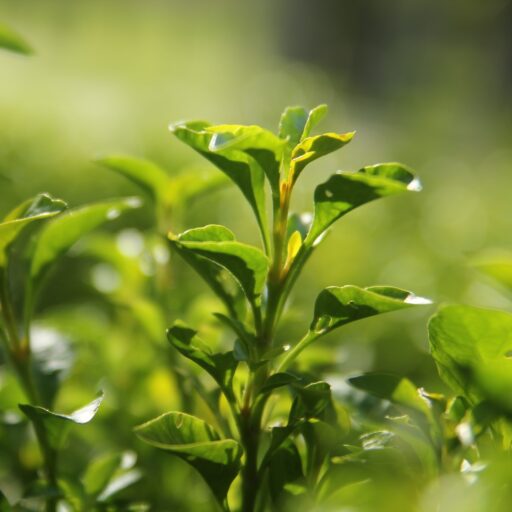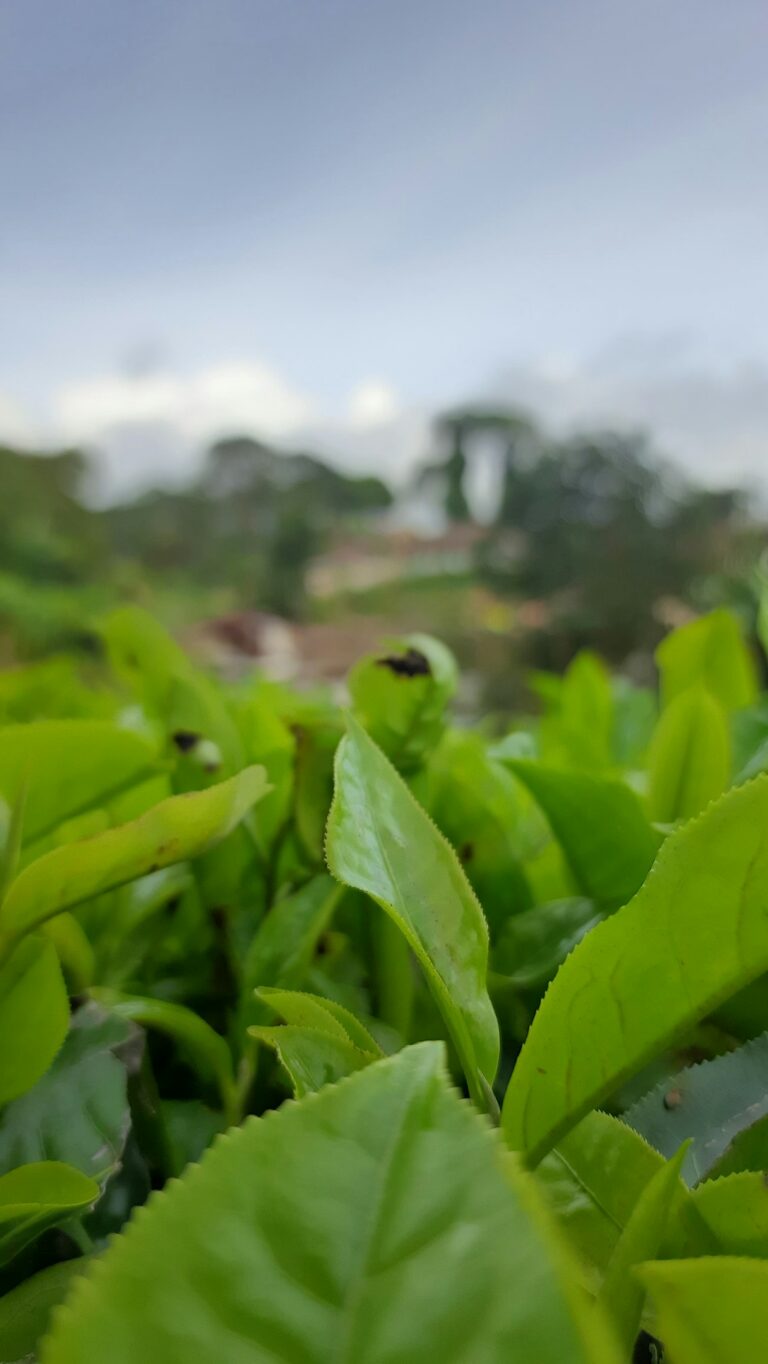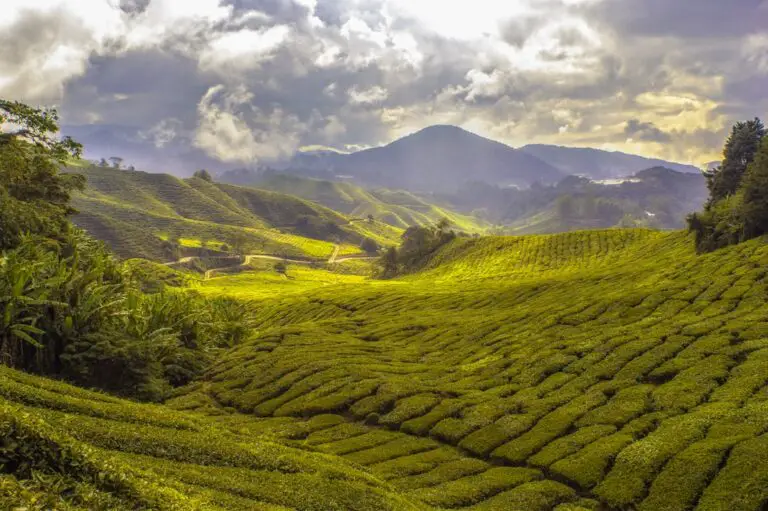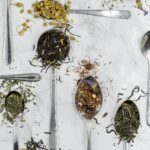Support our educational content for free when you purchase through links on our site. Learn more
Is It Easy to Grow Your Own Tea? 18 Expert Tips for 2025 🍃

Have you ever wondered if that perfect cup of tea could come straight from your own backyard—or even your windowsill? Growing your own tea sounds like a dream, but is it really as easy as planting a seed and waiting for leaves to sprout? At Growing Teas™, we’ve spent years cultivating Camellia sinensis and experimenting with every step from seedling to steaming cup. Spoiler alert: it’s a rewarding journey, but one that requires patience, the right conditions, and a bit of green-thumb know-how.
Did you know tea plants take about three years before they’re ready for their first harvest? And that the same leaf can become green, black, oolong, or white tea depending on how you process it? Stick with us as we unravel the secrets, challenges, and joys of growing your own tea—plus insider tips that will have you brewing your own fresh leaves sooner than you think!
Key Takeaways
- Growing tea is a fulfilling but patient hobby: Expect 3+ years before your first harvest.
- Choose the right variety: Camellia sinensis var. sinensis for cooler climates; assamica for warmer zones.
- Soil and climate matter: Acidic, well-drained soil and 4–6 hours of sunlight daily are essential.
- Watering and pruning are critical: Keep soil moist but not soggy and prune annually for healthy growth.
- Processing transforms your leaves: Learn simple oxidation and drying techniques to craft green, black, oolong, or white tea.
- Indoor growing is possible: With grow lights and acidic soil, even urban gardeners can enjoy fresh tea leaves year-round.
Ready to start your tea garden? Check out trusted sources for tea plants and supplies:
- Camellia Forest Nursery: Amazon | Official Site
- Minto Island Tea Company: Official Site
- Miracle-Gro Azalea & Camellia Fertilizer: Amazon
Dive deeper into growing your own tea with our expert guides and start brewing your personal cup of perfection!
Table of Contents
- ⚡️ Quick Tips and Facts
- 📜 The Ancient Roots of Your Morning Cuppa: A Brief History of Tea Cultivation
- 🤔 So, Is It Really Easy to Grow Your Own Tea? Unpacking the Truth!
- 🌿 Meet Your Future Brew: Understanding Camellia Sinensis Varieties for Home Growers
- 🌱 Getting Started: Your Tea Growing Journey Begins!
- 💧 Nurturing Your Green Gold: Essential Tea Plant Care & Maintenance
- ⏳ The Waiting Game: How Long Until You Sip Your Homegrown Brew?
- ✂️ The Moment of Truth: Harvesting Your First Tea Leaves
- 🍵 From Leaf to Cup: Processing Your Homegrown Tea
- 🏡 Growing Tea Indoors: A Green Thumb’s Urban Oasis
- 🚧 Overcoming Obstacles: Common Challenges and Troubleshooting Your Tea Garden
- 🎉 The Sweet Reward: Why Growing Your Own Tea is Worth Every Effort
- 💡 Pro Tips from Growing Teas™: Elevate Your Tea Growing Game
- ❓ Your Burning Questions Answered: Growing Tea FAQ
- 🔗 Dive Deeper: Recommended Resources & Further Reading
- 📚 Our Sources: Where We Brewed Our Knowledge
- 👋 Conclusion: Your Tea Journey Awaits!
⚡️ Quick Tips and Facts
Welcome to the wonderful world of growing your own tea! Before we dive deep, here are some quick nuggets from the tea fields of Growing Teas™ to whet your appetite:
- ✅ Tea plants are hardy but picky: They thrive best in acidic, well-drained soil (pH 4.5-6) and need consistent moisture without soggy roots.
- ✅ Patience is your best friend: Expect to wait 3 years before your tea bush is ready for its first harvest.
- ✅ Sunlight matters: Tea plants love full sun to partial shade—too much shade and they sulk; too much sun and they get scorched.
- ✅ Spacing is key: Give your tea bushes at least 3 to 5 feet apart to breathe and grow strong.
- ✅ Water like a pro: Young plants need watering 2-3 times a week in summer; mature bushes require about 60 inches of water annually.
- ✅ Pruning encourages growth: Regular trimming keeps your tea bush bushy and productive.
- ✅ Tea flowers are more than pretty: They can be brewed into a delicate, floral tea, but commercial growers often discourage blooming to focus energy on leaves.
- ✅ You can grow tea indoors! With the right light and care, your kitchen windowsill can become a mini tea plantation.
- ✅ Processing your leaves is an art: Green, black, oolong, and white teas all start from the same leaf but differ in oxidation and drying techniques.
Curious about how to start your own tea garden? Check out our detailed guide on How Hard Is It to Grow a Tea Plant? 12 Expert Tips for 2025 🍃.
📜 The Ancient Roots of Your Morning Cuppa: A Brief History of Tea Cultivation
Tea isn’t just a drink; it’s a living legacy steeped in thousands of years of history. The tea plant, Camellia sinensis, has been cultivated since at least 2737 BCE in China, according to legend. From the misty mountains of Yunnan to the sprawling plantations of Assam and Sri Lanka, tea has traveled continents and cultures to become the world’s most beloved beverage.
- The Chinese pioneered tea cultivation and processing methods, including steaming leaves for green tea.
- Japanese monks brought tea to Japan, evolving the ceremonial matcha culture.
- British colonialism spread tea to India and Africa, creating vast plantations.
- Today, tea is grown in over 60 countries, with millions of small growers and hobbyists worldwide.
For a fascinating dive into tea’s journey, visit our History of Tea category.
🤔 So, Is It Really Easy to Grow Your Own Tea? Unpacking the Truth!
Let’s cut to the chase: Growing your own tea is rewarding but not exactly a walk in the park. It’s a blend of science, patience, and a touch of green-thumb magic.
- Challenges: Tea plants need specific soil acidity, steady moisture, and protection from frost and pests.
- Time: You won’t be sipping your own brew tomorrow; it takes years to mature.
- Learning curve: Processing leaves into drinkable tea requires practice and experimentation.
But here’s the kicker — if you love gardening and tea, the journey is half the fun! Plus, growing your own tea means you control every step, from seedling to cup, ensuring freshness and flavor.
For a detailed breakdown, see our How Hard Is It to Grow a Tea Plant? 12 Expert Tips for 2025 🍃.
🌿 Meet Your Future Brew: Understanding Camellia Sinensis Varieties for Home Growers
Not all tea plants are created equal! The two main varieties of Camellia sinensis are:
| Variety | Origin | Characteristics | Best For |
|---|---|---|---|
| Camellia sinensis var. sinensis | China, Japan | Smaller leaves, hardy to cooler climates | Green, white, oolong teas |
| Camellia sinensis var. assamica | Assam, India | Larger leaves, thrives in warmer, humid zones | Black teas, robust flavors |
Which one should you grow? If you live in a cooler or temperate climate, the sinensis variety is your best bet. For warmer, humid regions, assamica will flourish.
We recommend sourcing from reputable nurseries like Camellia Forest Nursery or Minto Island Tea Company for healthy, true-to-type plants.
🌱 Getting Started: Your Tea Growing Journey Begins!
1. Finding Your Perfect Tea Plant: Seeds vs. Cuttings vs. Young Plants
- Seeds: Growing from seed is rewarding but slow. Germination can take 6-8 weeks, and seedlings need careful nurturing.
- Cuttings: Faster than seeds, cuttings root in a few weeks and retain parent plant traits.
- Young plants/saplings: The easiest way to jumpstart your tea garden; usually 1-2 years old and ready for transplanting.
Each method has pros and cons. Seeds offer genetic diversity but require patience. Cuttings and saplings give quicker results but may cost more upfront.
2. Where to Buy Tea Plants: Our Trusted Sources & What to Look For
Finding healthy tea plants is crucial. Here are some trusted sources:
- Camellia Forest Nursery — Specializes in Camellia sinensis with excellent customer reviews.
- Minto Island Tea Company — Offers young plants and expert advice.
- Fast Growing Trees — Convenient online nursery with nationwide shipping.
- Oregon Tea Traders — Known for quality stock and regional expertise.
When buying, look for:
- Healthy, pest-free leaves
- Well-developed root systems
- Varietal information (sinensis or assamica)
- Local climate suitability
👉 CHECK PRICE on:
3. The Ideal Home for Your Tea: Climate, Growing Zones, and Location, Location, Location!
Tea plants thrive in USDA Zones 7-9, but with care, can be grown indoors or in greenhouses elsewhere.
- Temperature: Ideal daytime temps between 65-85°F (18-29°C).
- Humidity: Moderate to high humidity preferred.
- Frost: Young plants are frost-sensitive; protect or bring indoors during cold snaps.
- Sunlight: Full sun to partial shade; avoid harsh afternoon sun in hot climates.
If you’re outside these zones, consider container growing indoors or in a greenhouse.
4. Nourishing the Roots: Crafting the Perfect Soil for Thriving Tea Plants
Tea plants are acid-loving and prefer soil with:
- pH between 4.5 and 6.0
- Well-drained, sandy loam or loamy soil
- Rich in organic matter
Avoid heavy clay or alkaline soils. Amend with pine needles, peat moss, or composted oak leaves to increase acidity and drainage.
5. Sunlight & Shade: How Much Light Does a Tea Plant Really Crave?
Tea plants love bright, indirect sunlight but can tolerate partial shade.
- Too much direct sun can scorch leaves.
- Too much shade slows growth and reduces leaf quality.
Aim for 4-6 hours of morning sun with afternoon shade in hot climates.
6. The Art of Planting: From Potting Mix to Permanent Plot
- For pots: Use ericaceous (acidic) potting mix with added perlite for drainage.
- For ground planting: Dig a hole twice the width of the root ball, same depth.
- Backfill with native soil amended with compost.
- Mulch with organic material (pine bark, leaves) to retain moisture and suppress weeds.
7. Spacing Your Tea Treasures: Giving Them Room to Flourish
| Planting Style | Recommended Spacing | Notes |
|---|---|---|
| Hedge or dense rows | 1.5 to 3 feet apart | For commercial or privacy hedges |
| Home garden planting | 3 to 5 feet apart | Allows bushy growth and airflow |
Proper spacing reduces disease risk and encourages healthy branching.
💧 Nurturing Your Green Gold: Essential Tea Plant Care & Maintenance
8. The Thirsty Tea Plant: Watering Wisdom for Optimal Growth
- Young plants: Water 2-3 times weekly during growing season.
- Mature plants: Require about 60 inches of water annually.
- Avoid waterlogging; ensure soil drains well.
- Mulching helps retain moisture.
9. Feeding Your Future Brew: Fertilizing for Robust Tea Production
- Use acidic fertilizers like azalea or camellia food.
- Apply balanced NPK fertilizers (e.g., 10-10-10) in early spring and mid-summer.
- Organic options: compost tea, fish emulsion.
- Avoid over-fertilizing; it can cause excessive leaf growth with poor flavor.
10. Shaping Your Tea Bush: The Art of Pruning for Health and Harvest
- Prune annually to encourage branching and leaf production.
- Remove dead or diseased branches.
- Keep bushes at manageable heights (3-5 feet) for easy harvesting.
- Pruning also improves air circulation, reducing fungal risks.
11. Battling Bugs & Blight: Common Pests and Diseases (and How to Win!)
- Common pests: aphids, spider mites, scale insects.
- Diseases: root rot (from poor drainage), leaf spot, powdery mildew.
- Organic control: neem oil, insecticidal soap, beneficial insects like ladybugs.
- Good cultural practices (proper watering, spacing) reduce disease risk.
⏳ The Waiting Game: How Long Until You Sip Your Homegrown Brew?
Tea plants take 3 years to mature enough for harvesting. During this time:
- Focus on healthy growth and root development.
- Resist the urge to harvest early; premature plucking weakens plants.
- Once mature, you can harvest multiple flushes per year, depending on climate.
✂️ The Moment of Truth: Harvesting Your First Tea Leaves
12. When to Pluck: Recognizing the Perfect Flush
- Harvest the top two leaves and a bud—this “two leaves and a bud” standard yields the best flavor.
- Pluck in the morning after dew evaporates.
- Avoid harvesting during extreme heat or cold.
13. The Gentle Art of Plucking: Tips for a Bountiful Harvest
- Use your fingers or sharp scissors to avoid damaging branches.
- Harvest selectively to allow regrowth.
- Regular harvesting encourages new shoots and bushier plants.
🍵 From Leaf to Cup: Processing Your Homegrown Tea
Processing is where your green leaves transform into your favorite tea style. Here’s a quick primer:
14. The Magic of Oxidation: Crafting Different Tea Types (Green, Black, Oolong, White)
| Tea Type | Oxidation Level | Processing Highlights |
|---|---|---|
| Green | Minimal (0-10%) | Steamed or pan-fried quickly to stop oxidation |
| Black | Full (90-100%) | Leaves rolled/crushed, fully oxidized |
| Oolong | Partial (10-70%) | Partial oxidation, often with sun-wilting |
| White | Minimal, natural | Withered and dried with minimal processing |
15. Simple Steps to Process Your Own Green Tea
- Pluck young leaves and buds.
- Blot dry and let wilt in shade for 1-2 hours.
- Steam leaves for 1 minute to halt oxidation.
- Spread on baking sheet; dry in oven at 250°F for 20 minutes.
- Store in airtight container.
16. Brewing Your Own Black Tea: A Step-by-Step Guide
- Pluck young leaves and buds.
- Roll leaves gently between hands to bruise and start oxidation.
- Spread on tray; leave in cool place for 2-3 days to fully oxidize.
- Dry in oven at 250°F for 20 minutes.
- Store airtight.
17. Exploring Oolong & White Tea Processing at Home
- Oolong: Wither leaves in sun for 45 minutes, stir hourly, partial oxidation, then dry.
- White: Simply pluck, wither naturally, and dry with minimal handling.
18. What About Tea Flowers? More Than Just Pretty Petals!
Tea flowers bloom white and fragrant. While commercial growers discourage flowering to focus energy on leaves, you can:
- Brew tea from flowers for a delicate, sweet infusion.
- Use petals in blends for aroma and visual appeal.
- Dry flowers for potpourri or herbal remedies.
🏡 Growing Tea Indoors: A Green Thumb’s Urban Oasis
No backyard? No problem! Tea plants can thrive indoors if you provide:
- Bright, indirect light (grow lights help in darker spaces)
- Acidic potting mix with good drainage
- Regular watering without waterlogging
- Humidity trays or misting to mimic natural environment
Indoor tea growing is perfect for urban gardeners craving fresh leaves year-round.
🚧 Overcoming Obstacles: Common Challenges and Troubleshooting Your Tea Garden
- Yellow leaves: Often nutrient deficiency or overwatering.
- Slow growth: Could be insufficient light or poor soil.
- Pests: Early detection and organic treatments are key.
- Frost damage: Protect young plants with covers or bring indoors.
Don’t get discouraged! Every tea grower faces hurdles — persistence pays off.
🎉 The Sweet Reward: Why Growing Your Own Tea is Worth Every Effort
Imagine sipping a cup of tea made from leaves you nurtured from seed to sip. The flavor, freshness, and pride are unmatched. Plus:
- You control pesticides and additives.
- You can experiment with unique blends and processing.
- It’s a sustainable, eco-friendly hobby.
- Growing tea connects you to centuries of tradition and nature’s rhythms.
💡 Pro Tips from Growing Teas™: Elevate Your Tea Growing Game
- Start with healthy saplings from trusted nurseries.
- Use rainwater or filtered water to avoid chlorine.
- Mulch heavily to conserve moisture and suppress weeds.
- Rotate harvesting spots to avoid stressing plants.
- Keep a garden journal to track growth, harvests, and experiments.
❓ Your Burning Questions Answered: Growing Tea FAQ
Q: Can I grow tea in a pot on my balcony?
A: Absolutely! Use acidic potting mix and ensure good drainage. Bring indoors in winter if frost threatens.
Q: How often should I harvest?
A: Once mature, harvest every 7-14 days during the growing season for best flavor and growth.
Q: Can I grow tea from supermarket tea bags?
A: Nope! Tea bags contain dried leaves, not viable seeds or cuttings. Buy from reputable sources.
Q: What’s the best time of year to plant?
A: Spring or early summer after frost risk passes.
For more FAQs, visit our Green Tea Cultivation category.
🔗 Dive Deeper: Recommended Resources & Further Reading
- Young Mountain Tea: Growing Your Own Tea Plant — A practical grower’s perspective.
- Love The Garden: How to Grow Tea in the UK — Tips for cooler climates.
- The Spruce Eats: Growing Tea at Home — Step-by-step processing guides.
📚 Our Sources: Where We Brewed Our Knowledge
- USDA Plant Hardiness Zone Map
- Camellia Forest Nursery
- Minto Island Tea Company
- Royal Horticultural Society: Growing Camellias
- Tea Association of the USA
👋 Conclusion: Your Tea Journey Awaits!
So, is it easy to grow your own tea? The honest answer: it’s a labor of love that rewards patience, care, and curiosity. Growing tea at home isn’t a quick-win garden hack, but it’s a deeply satisfying adventure that connects you with centuries of tradition and the purest flavors nature can offer.
From selecting the right Camellia sinensis variety to nurturing your plants through their early years, and finally harvesting and processing your own leaves, every step is a chance to learn and experiment. Yes, you’ll face challenges—soil tweaks, pest battles, and the waiting game—but the payoff is a cup of tea that’s truly yours, fresh and bursting with character.
If you’re ready to embark on this green-thumbed journey, start with healthy saplings from trusted nurseries like Camellia Forest Nursery or Minto Island Tea Company, follow our expert tips, and savor the process as much as the product.
Remember, your first harvest might be modest, but with time, your tea garden can flourish for decades, offering endless cups of joy. So, roll up your sleeves, grab your pruning shears, and get ready to brew your own story—one leaf at a time! 🍃☕️
🔗 Recommended Links
Ready to start growing? Here are some top picks and resources to get you going:
-
Camellia Forest Nursery Tea Plants:
Amazon | Camellia Forest Official Website -
Minto Island Tea Company Saplings:
Minto Island Tea Official Website -
Fast Growing Trees Tea Plants:
Amazon | Fast Growing Trees Official Website -
Miracle-Gro Azalea, Camellia & Rhododendron Soluble Plant Food:
Amazon -
Levington Peat Free Ericaceous Compost:
Amazon UK -
Books to Brew Your Knowledge:
❓ Your Burning Questions Answered: Growing Tea FAQ
What are the best tea plants for beginners to grow at home?
For beginners, Camellia sinensis var. sinensis is usually the best choice. It’s more cold-hardy and adaptable to temperate climates, making it suitable for many home gardens and indoor growing. It produces the classic green and white teas with delicate flavors. If you live in warmer, humid regions, the assamica variety thrives but requires more space and moisture.
Look for young saplings from trusted nurseries like Camellia Forest Nursery or Minto Island Tea Company. Starting with healthy plants significantly improves your success rate.
How much space and equipment do I need to start a home tea garden?
You don’t need acres of land! For a small home garden, allocate at least 3 to 5 feet between each tea bush to allow healthy growth and airflow. If space is tight, growing tea in containers indoors or on balconies is entirely possible with the right care.
Essential equipment includes:
- Acidic potting soil or ericaceous compost
- Well-draining pots or planting beds
- Pruning shears for shaping bushes
- Watering system or hose for consistent moisture
- Optional: grow lights for indoor setups
Starting small and expanding as you gain confidence is a smart approach.
What are the most common challenges when growing tea plants, and how can I overcome them?
Common challenges include:
- Soil pH imbalance: Tea plants need acidic soil (pH 4.5-6). Test your soil and amend with peat moss or pine needles if needed.
- Water management: Overwatering causes root rot; underwatering stresses plants. Mulching and proper drainage help maintain moisture balance.
- Pests and diseases: Aphids, spider mites, and fungal diseases can attack. Use organic controls like neem oil and maintain good airflow through pruning.
- Climate sensitivity: Frost can damage young plants. Protect with covers or bring pots indoors during cold snaps.
Patience and observation are key. Keep a garden journal to track issues and solutions.
Can I grow tea indoors, or does it require a specific outdoor climate and environment?
Yes, you can grow tea indoors! While tea plants naturally prefer USDA Zones 7-9 outdoors, indoor growing lets you control temperature, humidity, and light.
Tips for indoor tea growing:
- Use bright, indirect light or supplement with grow lights.
- Maintain humidity with misting or humidity trays.
- Use acidic potting mix with excellent drainage.
- Water consistently but avoid waterlogging.
Indoor tea growing is perfect for urban gardeners or those in colder climates who want fresh leaves year-round.
How do I process fresh tea leaves into different types of tea at home?
Processing is where your tea leaves transform into green, black, oolong, or white teas. The key difference is oxidation level and drying method.
- Green tea: Minimal oxidation; steam or pan-fry leaves quickly, then dry.
- Black tea: Full oxidation; bruise leaves, let them oxidize for days, then dry.
- Oolong tea: Partial oxidation; wither leaves in sun, stir regularly, then dry.
- White tea: Minimal processing; simply wither and dry young leaves.
Experimentation is part of the fun! For detailed step-by-step guides, see our DIY Tea Blending category.
📚 Reference Links
- Young Mountain Tea: Grow Your Own Tea Plant
- Love The Garden: How to Grow Tea
- The Spruce Eats: Growing Tea at Home
- USDA Plant Hardiness Zone Map
- Camellia Forest Nursery
- Minto Island Tea Company
- Royal Horticultural Society: Growing Camellias
- Tea Association of the USA




